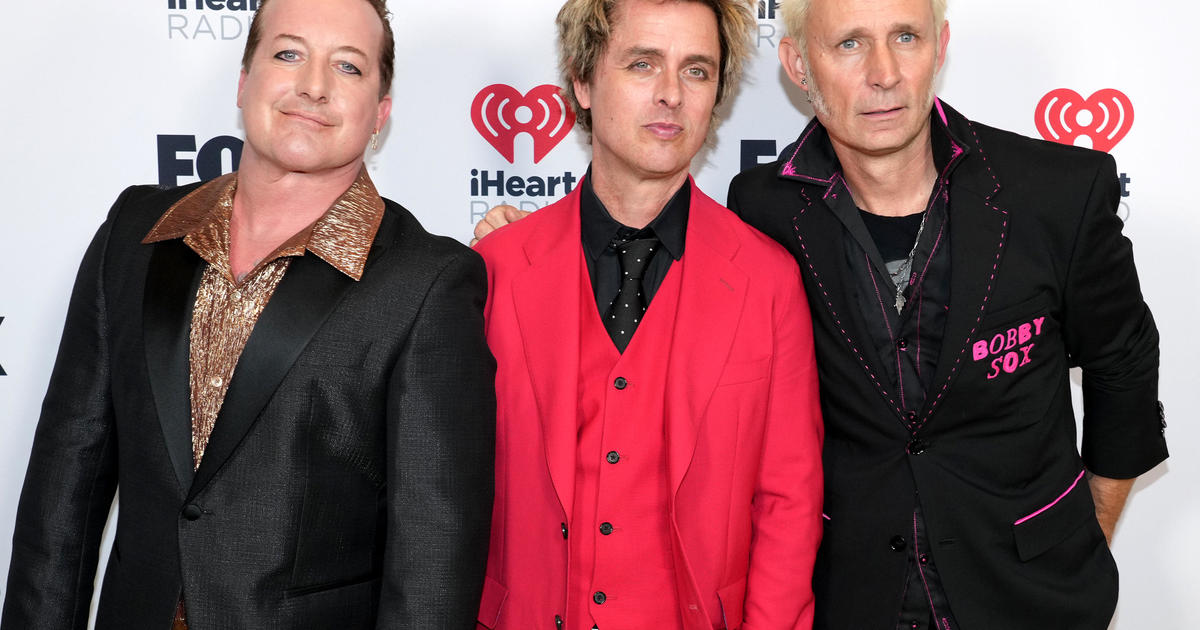U2 Malibu Project Raises Questions About LEED
LOS ANGELES (AP) — When U2 guitarist The Edge announced plans to build a cluster of mansions overlooking the Pacific Ocean, he promised the homes would look like nothing more than scattered leaves on the ridgeline and boast the country's most sought-after green building seal.
Environmental groups, state and federal officials and even some neighbors have not been sold. The green designs are great, they said, but just don't build your houses in one of the most environmentally sensitive areas in Southern California.
Critics say the proposed project in ocean-front Malibu is an example of how developers can follow the rules, but still violate the spirit of the national green building program called the Leadership in Energy and Environmental Design, or LEED.
While many acknowledge the program, is a step in the right direction, critics say dressing up homes, office buildings and hotels in a green veneer gives short shrift to one of the most critical elements of all: whether anything should be built there.
"You can have a really environmental project that scores incredibly well on LEED but if it's placed in a pristine area is it truly an environmental project?" said Mark Gold, executive director of Heal the Bay, which opposes the project.
"Most people in the environmental community would say `No' and that's something that LEED need to take into greater consideration."
The Green Building Council, which oversees LEED, says the system is meant to be flexible. Whether or not a building or home should be built in a certain area is primarily left up to local and state authorities.
It's a balancing act," said Nate Kredich, the nonprofit's vice president of residential market development, who disagrees with the idea that they don't give enough weight to siting.
"I think for the most part we have folks fairly comfortable that site selection is ultimately not something that should prohibit someone from building a LEED home," Kredich said. "That's not our area."
LEED certification has become the benchmark for green design, allowing developers to get their plans processed faster in some cities. It also all but ensures positive publicity for a project.
The National Parks Service, which manages land near The Edge's project, and conservation groups have seized on what they see as a major flaw in the coveted green building system.
They say out of a possible 136 points used to determine a home's LEED rating, only 10 percent touch on where it is built.
The Edge, whose real name is David Evans, and his partners want to build five homes averaging 10,500-square-feet each on a 156-acre site in the Santa Monica Mountains. The homes will feature native landscaping, electric vehicle charging, solar panels and their own wastewater treatment. The plan also calls for an access road up the mountain.
Evans was not available for comment, but his website promoting the project said most of the land will remain untouched and that the "sustainable homes will prevent inappropriate designs from being built on any of these legal home sites in the future."
"From the beginning the intention was to achieve a benchmark for sustainable design in a sensitive area," the site said.
In February, staff recommended the California Coastal Commission reject the proposal in part because of a series concerns over what kind of damage the development would do to the expansive hillside which currently features little more than chaparral and native grasses. The report suggested that one to three homes might be more appropriate for such a site.
The commission is expected to take up the matter in April or June. The panel does not have to adopt staff's recommendation.
Commission Chair Sara Wan declined to comment on the project itself but said the LEED system does not make much of a distinction between a project sited in a city as opposed to an important habitat area.
"If you get credit for a good roof you can take out a nice habitat," Wan said. "A house should be looked at totally differently -- not just a few points -- when it's sited in an urban setting, agricultural setting or pristine habitat setting. Fragmentation, impacts to biodiversity, views -- all of these factors are really not weighed appropriately."
The commission has already had one brush with a massive project touting its green certification. Two years ago, a developer proposed the 341-unit Monterey Bay Shores EcoResort on sand dunes.
Developer Ed Ghandour claimed it would be the greenest development ever built, with platinum certification. Ocean breezes would cool the hotel, wind turbines and solar panels would produce electricity and five acres of living roofs would support native species.
The panel killed the project, saying it didn't have an adequate water supply and or appropriately address coastal erosion, for example.
The LEED standards were created in 2000 and are overseen by the Green Building Council, a nonprofit trade organization made up of more than 18,500 member organizations from all aspects of the building industry who annually vote on changes to the system.
In the case of homes, the points are divided among a variety of categories that cover materials, water efficiency and landscaping, with the largest number of points going to energy efficiency.
Kredich said LEED tries to discourage construction in sensitive areas.
The system requires more points for a larger project such as the one The Edge wants to build and without the points related to appropriate siting, it could be "a tall order for a project aspiring for Gold certification," he said.
Greg Reitz, a principle with REthink Development, who is the project's green building consultant, agreed that it will be a challenge especially since they're not likely to get any of the points awarded for responsible siting.
Reitz said they are going to use native landscaping to reduce water usage, excavated soil in the structural material and are aiming not to have any erosion or runoff during construction.
"We pretty much have to do just about everything right according to LEED," he said.
(© Copyright 2011 The Associated Press. All Rights Reserved. This material may not be published, broadcast, rewritten or redistributed.)



